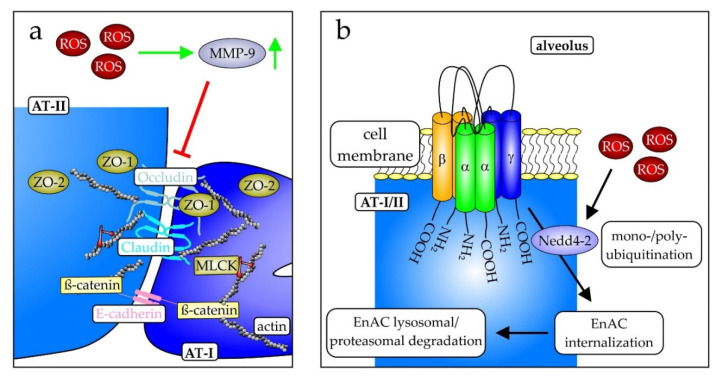Figure 4.
Important structures in alveolar epithelial cells. (a) The connection between alveolar type I and type II cells is mediated by occludin and claudin, two proteins involved in the formation of tight junctions, and the calcium-dependent cell adhesion protein epithelial (E)-cadherin. These proteins connect cells to the intracellular actin filaments and downstream signaling cascades as exemplified by the myosin light chain kinase (MLCK) via β-catenin and the zona occludens proteins ZO-1 and ZO-2 (mod. from [117]). (b) The epithelial sodium channel (ENaC) is a multimeric protein complex localized in the cell membrane of the pulmonary AT-I and -II cells. It consists of the three homo-dimeric subunits αα, ββ, and γγ and is an important mediator of pulmonary edema clearance and is expressed in two isoforms. One is highly Na+ selective, whereas the other is a cation-nonselective form. During ARDS, several mechanisms provoke downregulation of ENaC expression, apical localization, and activity. ENaC is downregulated by internalization and proteasomal or lysosomal degradation, following Nedd4-2-dependent mono- or poly-ubiquitination. During infection, the downregulation of inflammatory cytokines TNF-α, TGF-β, IL-4, IL-13, and IL-1β contributes to this [mod. from [157,158]).

